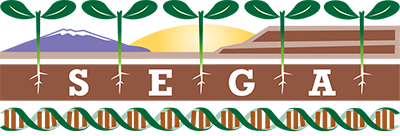You are here
Separating ontogenetic and environmental determination of resistance to herbivory in cottonwood.
Publication Type:
Journal ArticleSource:
Ecology, Volume 90, Issue 11, p.2969 - 73 (2009)ISBN:
0012-9658URL:
http://www.ncbi.nlm.nih.gov/sites/entrez?Db=pubmed&DbFrom=pubmed&Cmd=Link&LinkName=pubmed_pubmed&LinkReadableName=Related%20Articles&IdsFromResult=19967853&ordinalpos=3&itool=EntrezSystem2.PEntrez.Pubmed.Pubmed_ResultsPanel.Pubmed_RVDocSumhttp://www.ncbi.Keywords:
Animals, Aphids, Biological Evolution, Ecosystem, Feeding Behavior, PopulusAbstract:
<p>We used narrowleaf cottonwood, Populus angustifolia, and the gall-forming aphid, Pemphigus betae, to determine the extent to which ontogenetic variation in resistance to herbivory is due to endogenous, stable genetic influences. In a three-year common garden trial using ramets propagated from the top, middle, and bottom of mature trees, we found that the resistance of trees to aphids was significantly higher in top vs. bottom source ramets, supporting the hypothesis of a stable, genetically programmed component to aphid resistance. The magnitude of ontogenetically based variation in resistance within an individual tree is comparable to the genetic variation in resistance among narrowleaf cottonwood genotypes or populations found in other studies. These ontogenetic-based findings have the potential to alter ecological interactions and evolutionary trajectories of plant-herbivore interactions.</p>
- Log in to post comments
- Google Scholar
- RTF
- EndNote XML
- RIS
Theme by Danetsoft and Danang Probo Sayekti inspired by Maksimer
